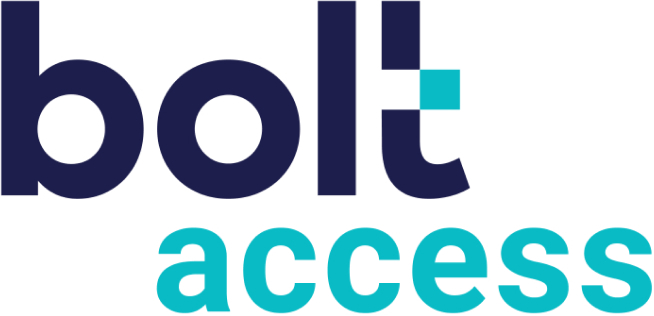Even though a professional salesperson knows not to take rejection from potential customers personally, it still stings a little each time it happens. Worse, when you experience a string of rejections in a row, without any successes, it can leave you feeling a little deflated and unmotivated. If you’re finding yourself in such a rut, it might be time to hone your skills and try some new strategies that’ll boost your confidence. The good news is anyone can improve their cold calling skills. When you do improve these skills, the success you enjoy will bolster your confidence and create a virtuous cycle of sales momentum. Here are five strategies and skills that'll help you get better at cold calling.
1. Research Prospective Customers and Anticipate Their Needs
Before you even think about your call, you've got to think about your customer. This includes both general research into the people whose problems your product solves, and specific research into the potential customer you're calling right now. For example, imagine you have a product that would be a great fit for local business owners. Before you reach out to those businesses, look over those prospects’ websites, their press releases and any news that indicates a big stage of growth within the company. As the marketing gurus over at SalesImprover say, you want to use those data points "to figure out both a company’s goals and how their resources are currently being deployed." People respond more positively to someone who shows they genuinely understand the specific problem in detail. Another way to anticipate customer needs is to encourage feedback from your current customers. Retail and wholesale executive Deborah McMahon recommends having dedicated, two-way conversations to “engage the customer in ways you can further alleviate their pain points or solve problems.” Go to where these customers feel comfortable — a forum, a Facebook page, a chat on the phone — to start these conversations. “Think about how often you are asked for your feedback by hotels, airlines, and other businesses in the travel and hospitality industries,” McMahon says. “These companies are capturing the voice of their customers to better their products and services." Engaging with current customers to get their feedback is one of the best ways to get into the headspace of potential new prospects, as well as validating what you’re selling is worth buying.
2. Prepare Short Scripts
A script shouldn't be more than 20 seconds long. Your prospects will tune out after that. One common mistake people make when writing sales scripts is trying to impress the prospective customer by introducing themselves and listing all their (or their company's) credentials. Unfortunately, this comes across as arrogant and annoying, not impressive. So, if your 20-second script shouldn’t be a list of highlights and credentials, what should it be? Create a script that consists of three things:
- In the first sentence Highlight the benefits your company brings to the potential customer.
- In the second sentence: Point out the immediate reason for your call. For example, if you know the prospect’s company just merged with another company, this sentence would state how your service helps people manage that kind of transition in a specific, concrete way.
- In the third sentence: Provide a concrete application of your service to your customer's specific problem. From there, transition into asking for an appointment to have a more in-depth conversation.
3. Ask Open-Ended Questions
One of the best things you can do during a cold call is make your potential customer feel as if you're having a friendly conversation with them, not trying to sell them something. "With" is the key word in that sentence. Instead of a one-way monologue where you pitch something "to" a customer, remember that a conversation with someone is a two-way street. Listening and being curious are key. Open-ended questions keep the conversation moving. Don’t get stuck in a mindset of asking yes/no questions, and be taking notes so you’re prepared to ask follow-ups. Asking about someone’s history opens people up by letting them tell a story, which builds rapport. The key to good open-ended questions is to genuinely listen to your prospects’ answers, without interrupting or trying to lead them to the answer you want. You can't meet their needs if you don't understand them, and you don’t want to put them on the defensive by making them feel as if they have to answer questions in a specific way. Also, try to avoid "why" questions. “Why” questions make people feel interrogated and defensive, whereas "what" questions feel neutral. So, "What went into making that decision?" is a better question than "Why did you make that decision?"
4. Build an Objections Map
You probably won't be able to anticipate all of the critiques and objections of potential customers so thoroughly that you can write a script, as reassuring as that would be. But you can definitely predict common objections well enough to create a map. First, you need to make a list of common objections, both universal and unique to your company. Then, brainstorm one-sentence scripts that will maneuver the conversation around the objection and focus on the benefits of your services. For example, if the prospect says they already buy from your competitor, point out how exploring new options can upgrade their satisfaction level from good to great, and that there's a specific advantage you can give them that your competitor cannot. Scripts can also be open-ended questions. Mike Schulz, president of the global sales training and performance improvement company RAIN Group, gives some tips on this: “If someone says they're not interested, you might ask, ‘Okay. I’m curious to know, though, what could I have said about this topic that might have actually interested you?’” The past tense shows that you seem to accept their "no" while stealthily continuing to converse with them to turn that "no" into a "yes." The best way to figure out what scripts work with which objections is trial and error. As your team succeeds, make notes to remember and share with other salespeople in your department.
5. Practice Being Calm and Confident in Your Voice Tone
If you want to earn your prospect’s trust, it's important to sound like an honest and reliable person. Common sense, right? The thing is, there aren't any words that automatically convey honesty and reliability. Instead, people judge whether someone is trustworthy based on non-verbal cues like tone of voice and body language, often without even realizing they're making those judgements. The tone of voice you're going for on a cold call is calm and confident. If you're nervous, your prospect is going to get nervous then they're going to hang up. Dr. Jennifer Pardo researches speech communication and phonetics at Montclair State University, and she has some recommendations for sounding calm on the phone: “Low frequency, continuous sounds are far more comforting to distressed individuals than intermittent sounds.” For example, think of the steady, low vocal tones of Morgan Freeman. He’s the gold-star example of a trustworthy voice. Confidence comes from a deep, internal understanding of your company and your customer. Understanding the material gets you halfway there. The other half is practice to eliminate timid habits. Don't make statements sound like questions, and eliminate filler words such as um or like. “Most people do [this] as a matter of habit or nervousness, but caveats and fillers can damage the confident tone you’re trying to strike,” Sarah Landrum of Levo League explains. “Instead, say what you mean and nothing else.” If your tone of voice gives you trouble, or if calls make you nervous, practice in front of an encouraging teammate who can give you feedback in a non-judgemental way. Alternately, record your voice and play it back so you can recognize places where you falter. That way, you can practice those specific sections until you get it right.
Will This Really Work?
Only you can find out whether any particular skill or strategy is going to work for you. Make sure you’re keeping an accurate record of success when it comes to cold calling by tracking conversion rates. Once you have solid, accurate information on how your cold calls are going now, you’ll be able to track what changes in strategy result in more conversions. Then you can implement that strategy more widely and consistently.

